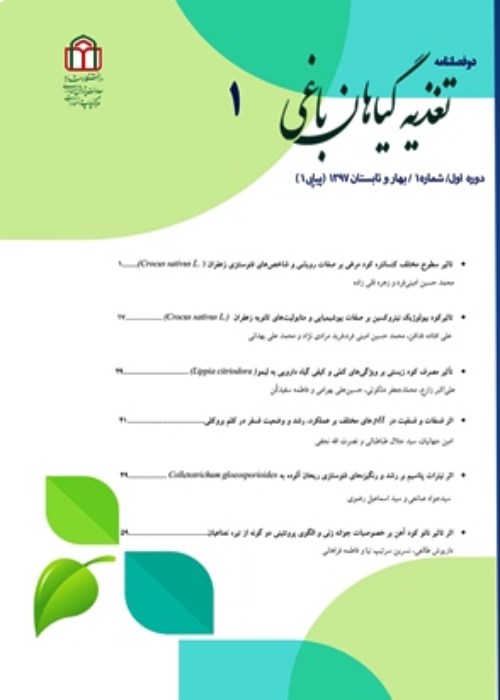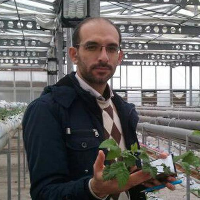Growth and yield comparison of two strawberry (Fragaria ×ananassa Duch) cultivars in open field under soil and soilless cultures
Strawberry as a model plant in horticulture included many cultivars with special climatic and nutritional requirements. ‘Camarosa’ is the most cultivated cultivar in Mazandaran province, and the efforts of strawberry growers to alternate this cultivar with ‘Gaviota’ were not successful. The purpose of this research was to evaluation and comparison of characteristics of Camarosa and Gaviota in soil and soilless cultures to find the causes of unsuccessful culture of Gaviota in Mazandran Province.
Two separated experiments performed synchronously in open filed soil and soilless cultures with Camarosa and Gaviota cultivars in complete random design with three replications. Vegetative characteristic, yield and nutritional elements in rhizosphere and leaves were evaluated. Results
In soilless culture the differences of Camarosa and Gaviota cultivars was not significant except for fresh weight and volume of the root system. Average of root volume and fresh weight of Camarosa 19.5 cm3 and 13.7 g, were higher than Gaviota with 14 cm3 and 6.96 g, respectively. However, in soil culture almost all of the traits were significantly higher in Camarosa than Gaviota. Results of nutrition concentration analysis in rhizosphere showed the rate of Zn and Cu were exposed to maximum range of nutrient elements due to over-consumption of chemical fertilizers in strawberry fields in north of Iran and purpose the negative effects of elements as most important cause in unsuccessful soil culture of Gaviota in Mazandaran province. Although hen fertilizers added to soil in high volume (40 tonHa-1) annually and resulted too high percent of N, in soil (16%) it was not related to increase leaf N of plants and N concentration of leaves were lower than optimum range (3-4%). Potassium absorption efficiency in Gaviota was more than Camarosa but it seems that sensitivity of Gaviota to Cu toxicity is higher than Camarosa as well.
The cultivars Camarosa and Gaviota did not show significant difference in many traits in open field soilless culture so it seems that the lack of success in soil culture of Gaviota is not associated to climate conditions. The underlying problem of Gaviota is related to soil and nutrition aspects like Cu toxicity. To success culture of Gaviota in Mazandran Province, it is recommended to perform perfect nutrition management in soil culture or using soilless medium.
-
Estimation of Chilling and Heat Requirements of Thorny and Thornless Blackberry Cultivars Under Laboratory Conditions
Somayeh Tabari, Mehdi Hadadinehjad*, Reza Noruz
Journal of Horticultural Science and Technology, -
Investigation of Growth and Photosynthetic Characteristics of Strawberry Daughter Plantlets Influenced by nitrogen fertilization of maternal plants
Amirali Mohammadi *, , Kamran Ghasemi
Journal of Plant Production,



